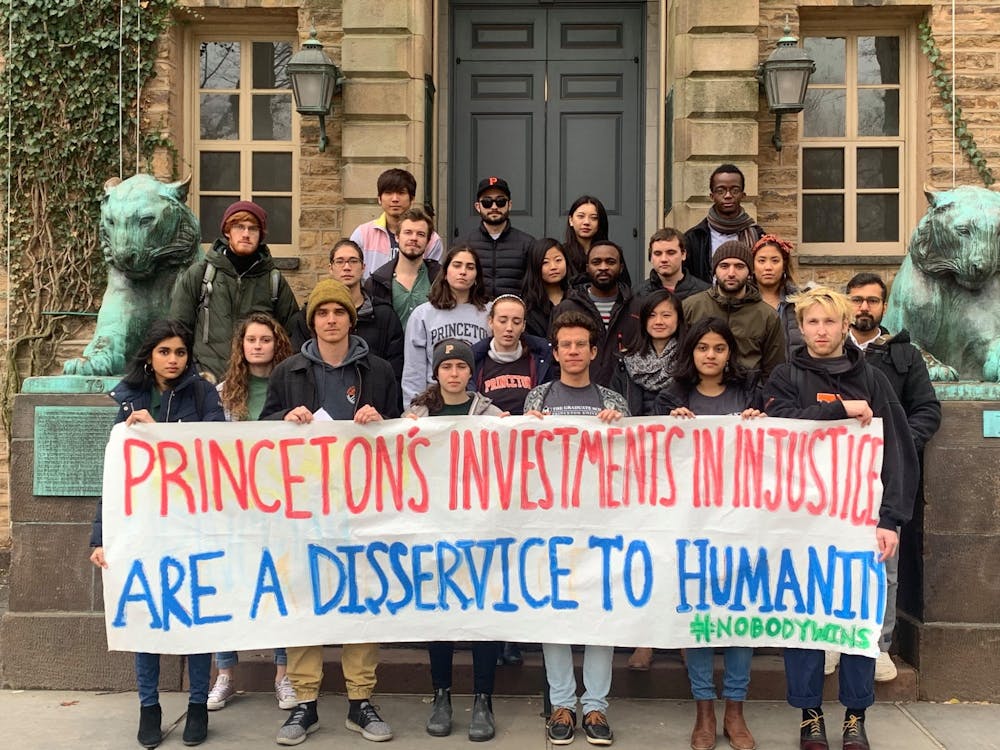In late May 2021, Princeton University’s Board of Trustees announced plans to partially divest from the fossil fuel industry. Many celebrated the news as a historic announcement: the furthest a fossil fuel divestment campaign has ever gotten at Princeton, coming after over a decade of organizing and five different iterations of the campaign.
But if Princeton’s plans to divest from coal and tar sands was such a historic decision, why are there still over 2,500 Princetonians withholding donations from the University? Why are there still posters all over campus for sit-ins in front of Nassau Hall? Why does Divest Princeton still exist if Princeton finally decided to do something?
The answer is: Princeton’s announcement hasn’t led to any substantial action regarding divestment. Instead, Princeton has continued to move slowly, implementing bureaucratic obstacles to taking concrete actions on divestment. The shortcomings of Princeton’s dissociation process have been well documented, including in recent columns by Lynne Archibald ’87 and Lucia Wetherill ’25.
Yet one troubling aspect I would like to highlight, as the co-coordinator of Divest Princeton and someone with an intimate knowledge of the dissociation process thus far, is the fact that the current dissociation process has no plans to include representatives from Divest Princeton or any other students, despite their uniquely informed perspectives on divestment stemming from years of rigorous engagement with all the aspects of the original divestment proposal sent to the Resources Committee.
There are no students participating in the deliberations on divestment happening within the Administrative Committee and the Faculty Panel on Dissociation. The young people whose lives are at stake — and whose lives are actively being harmed by Princeton’s continued delay of necessary climate action — do not have a seat at the table.
Representatives from Divest Princeton like myself, who worked closely with the Resources Committee on the proposal sent to the Board, are not included in the discussions and interpretations of our months of hard work. We have read hundreds of articles on the fossil fuel industry, investment vehicles, and stranded assets. We know about CO2 capture, net zero versus real zero, green hydrogen versus blue hydrogen. We have worked with environmental scholars and activists from around the country and around the world. We have attended and hosted hours of Zoom conferences, delving into topics as diverse as disinformation and fiduciary responsibility. We are Princeton students and future world leaders, yet our intellect and experience is not valued by Princeton.
Without inclusion of the students, alumni, and faculty who led the Divest Princeton campaign for the past two years, Princeton creates an adversarial relationship between administrators and organizers, when it could be a collaborative initiative with everyone working to make Princeton a better — and more sustainable — place.
Perhaps the administration thought that with their announcement of partial divestment, Divest Princeton would simply disappear. In fact, there have been several instances of student activists losing momentum after the University has done the bare minimum in recent memory. But for Divest Princeton, this could not be further from the truth.

Divest Princeton will continue to exist and withhold donations from the University, so long as Princeton fails to take seriously the urgent climate crisis at hand. What Divest Princeton advocates for is a bold plan for immediate divestment from all fossil fuel companies which do not align with United Nations science-based targets as established under the Paris Agreement.
Princeton should include the voices of those who will be most impacted by climate change and those who have spent years organizing for divestment in the conversations about Princeton’s endowment. Faculty, administrators, and student activists could work together to find a just, sustainable, and financially sound way forward for Princeton, based on the precedents set by hundreds of other universities.
Student representatives could act as liaisons between the otherwise inaccessible committees and the campus community, offering more transparency and clarity on proceedings, while also representing the interests of the student body. An organizational structure which allows for constructive debates between decision makers and concerned stakeholders would allow for a productive, democratic process in which all viewpoints are represented.
Instead of treating divestment as a politically divisive, taboo subject that can only be debated behind closed doors, Princeton has the opportunity to treat the subject of endowment justice as an analytic exercise in how best to manage our money and the climate crisis at hand.

Hannah Reynolds is a senior in the Anthropology Department from the Finger Lakes in Upstate NY. She is also the co-coordinator of Divest Princeton. Hannah can be reached at hannahr@princeton.edu.








